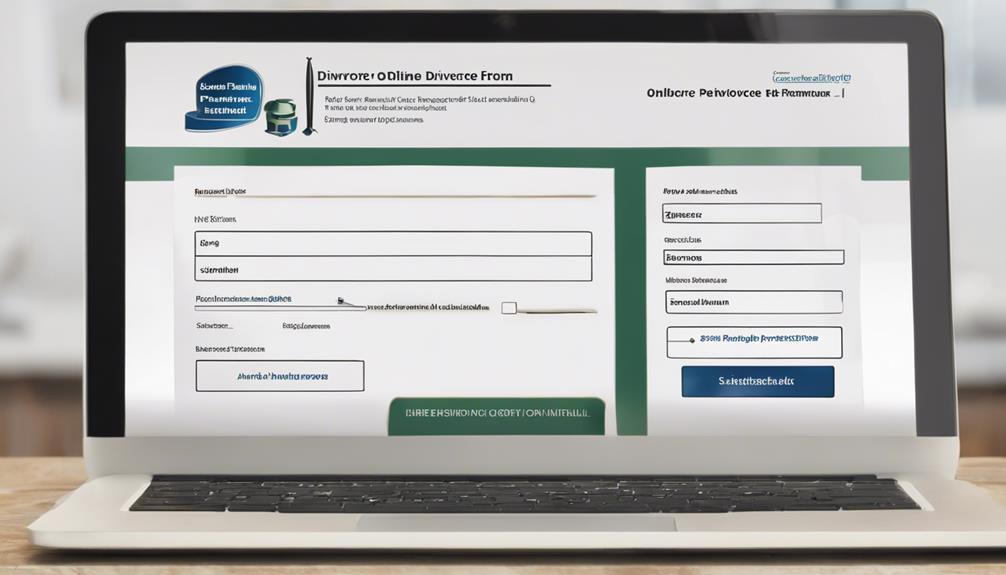Navigating post-divorce alimony can feel like a never-ending maze with no clear end in sight. But fear not; as we navigate through the legal and financial complexities together, we strive to shed light on understanding the length of alimony after divorce.
Let's embark on this journey of unraveling the intricacies of post-divorce financial support, piece by piece, to reveal the comprehensive guide that lies ahead.
Key Takeaways
- Alimony eligibility hinges on financial need and contributions during the marriage.
- Alimony duration is influenced by the length of the marriage and post-divorce financial changes.
- Request alimony during divorce proceedings and seek agreement with the spouse.
- Alimony amount is determined by financial need, earning capacity, and standard of living.
Eligibility for Alimony Post-Divorce
Determining eligibility for alimony post-divorce necessitates a comprehensive evaluation of the financial dependency and contributions established during the marriage. To qualify for alimony, one must demonstrate a genuine reliance on their spouse for financial support, showcasing an inability to meet their needs adequately due to insufficient property or the inability to independently sustain themselves. Alimony decisions hinge significantly on the financial need of the recipient and their capacity to re-enter the workforce. Moreover, the contributions made during the marriage, both financially and otherwise, are pivotal in determining the eligibility for post-divorce alimony.
Understanding the intricate web of financial interdependence, proof of reliance, and the nuances of financial need is paramount in navigating the complexities of alimony eligibility. It's essential to consider not only the current financial circumstances but also the historical contributions made during the marriage to make informed decisions that uphold fairness and justice in post-divorce financial arrangements.
Timeframe for Alimony Payments

Navigating the complexities of alimony post-divorce includes understanding the timeframe for alimony payments, which can commence during divorce proceedings if deemed necessary by the court. When considering the duration of alimony payments post-divorce, there are several key factors to keep in mind:
- Court Decision: Alimony payments can start during the divorce process based on the court's decision, without a specific waiting period post-divorce.
- Length of Marriage: The duration of alimony payments is often influenced by the length of the marriage, with longer marriages typically resulting in a higher likelihood of longer alimony support.
- Financial Changes: Circumstances such as significant financial changes post-divorce can impact the duration of alimony payments, necessitating adjustments based on the new financial situation.
- Remarriage and Other Circumstances: Factors like remarriage or other significant life changes can also affect the duration of alimony payments, potentially leading to modifications or termination of support.
Understanding these aspects can help individuals navigate the post-divorce alimony process effectively.
Factors Influencing Alimony Duration
When considering the duration of alimony payments post-divorce, the length of the marriage plays a significant role in influencing how long alimony may be provided. For marriages lasting 20 years or more, alimony may have no time limit, while for shorter marriages, the alimony duration generally can't exceed 50% of the marriage length.
Various factors such as financial need, ability to work, and contributions made during the marriage also impact the duration of alimony. The court makes the final determination on alimony duration based on the specific circumstances of the divorce case. It carefully considers the individual's financial situation, earning capacity, and the standard of living established during the marriage.
Understanding these alimony factors and limits is crucial in navigating the complexities of determining the appropriate duration of alimony payments post-divorce. By being aware of these aspects, individuals can better prepare for the court's decision and ensure a fair resolution in their divorce case.
Process of Requesting Alimony

In requesting alimony, we can either address it during the divorce proceedings or post-finalization, ensuring financial stability remains a priority in the divorce settlement process.
When navigating the process of requesting alimony, here are some essential steps to consider:
- Initiate the Request: Whether during divorce proceedings or after finalization, formally request alimony to address financial needs.
- Seek Agreement: Try to reach an agreement with your spouse on alimony terms, which can then be included in the court order.
- Court Intervention: If no agreement is reached, the judge will decide on the entitlement to alimony based on various factors.
- Ensure Financial Stability: Alimony plays a significant role in post-divorce financial stability, making it crucial to address during the divorce settlement process.
Understanding the process of requesting alimony is vital for securing the necessary financial support post-divorce. By following these steps and seeking appropriate legal guidance, you can navigate this aspect of divorce with clarity and confidence.
Alimony Amount Determination
Determining the amount of alimony in a divorce settlement involves a thorough evaluation of various factors. Judges consider the financial need of the recipient, their earning capacity, and the standard of living established during the marriage.
Contributions made by each spouse also play a crucial role in determining the appropriate spousal maintenance. The length of the marriage is a significant factor, as long-term marriages typically result in higher alimony amounts to ensure a fair distribution of assets and support.
Additionally, age, health, and future earning potential are taken into account to calculate a reasonable alimony amount that supports the recipient's financial well-being post-divorce.
It's essential to recognize that alimony amounts can vary widely depending on the specific circumstances of each case. Therefore, a detailed assessment of all these factors is essential to arrive at a just and equitable alimony arrangement that considers the needs of both parties.
Frequently Asked Questions
What Are the Requirements for Alimony in Texas?
In Texas, to qualify for spousal maintenance, one must lack sufficient property to meet minimum needs or be unable to support themselves due to disability. Spousal maintenance may be granted if there's a significant income disparity post a 10-year marriage.
What Is the Average Alimony Payment in the Us?
The average alimony payment in the US typically ranges from $1,000 to $3,000 per month. Factors like income disparity, duration of marriage, and living standards heavily influence these amounts. State income levels also impact payment averages.
What Is the Maximum Alimony in Utah?
In Utah, the maximum alimony depends on the length of the marriage, with a cap at 50% for marriages under 20 years. Factors like financial situations and contributions during marriage influence alimony decisions.
What States Have Permanent Alimony?
In some states like Connecticut, New Jersey, Oregon, Vermont, and Texas, permanent alimony is available based on factors like marriage length. Florida and Tennessee have specific conditions for permanent alimony. Seeking legal advice is crucial for state-specific information.
Conclusion
In conclusion, navigating the complexities of alimony post-divorce can be daunting. Understanding the eligibility criteria, timeframe for payments, and factors influencing duration is crucial.
Remember, seeking legal advice and support is like having a compass in a vast sea – guiding you through the process with clarity and direction. Trust in the legal system, seek the necessary help, and you can find your way to a fair resolution.










